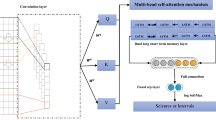Abstract
Although electroencephalography (EEG) is an important diagnostic tool for investigating patients with unexplained altered mental state (AMS), recording of emergency EEG is not a clinical routine. This is mainly due to the cumbersome electrode solutions. A Handy EEG Electrode Set consists of ten EEG, two EOG, two ground and two commutative reference hydrogel-coated silver wire electrodes attached to a thin polyester carrier film. The clinical usefulness of the Handy EEG Electrode Set was tested in 13 patients (five females, eight males) with AMS. EEG recordings were conducted at the same time with a standard 10–20 electrode set. The registration in the first patient case without the behind-ear electrodes (T9 and T10), indicated that these electrodes are very crucial to provide clinically relevant information from posterior regions of brain. In following 12 cases, the sensitivity and specificity for detecting EEG abnormality based on the Handy EEG Electrode Set recordings were 83 and 100 %, respectively. The Handy EEG Electrode Set proved to be easy to use and to provide valuable information for the neurophysiological evaluation of a patient suffering from AMS. However, further studies with larger number of patients are warranted to clarify the true diagnostic accuracy and applicability of this approach.




Similar content being viewed by others
References
Noachtar S, Rémi J. The role of EEG in epilepsy: a critical review. Epilepsy Behav. 2009;15(1):22–33.
Bearden ST, Nay LB. Utility of EEG in differential diagnosis of adults with unexplained acute alteration of mental status. Am J Electroneurodiagn Technol. 2011;51(2):92–104.
Borges MA, Botós HJ, Bastos RF, Godoy MF, de Marchi NSA. Emergency EEG study of survival. Arq Neuro-Psiquiatr. 2010;68(2):174–8.
Praline J, Grujic J, Corcia P, Lucas B, Hommet C, Autret A, de Toffol B. Emergent EEG in clinical practice. Clin Neurophysiol. 2007;118(10):2149–55.
Ricardo JAG, França MC Jr, Lima FO, Yassuda CL, Cendes F. The impact of EEG in the diagnosis and management of patients with acute impairment of consciousness. Arq Neuropsiquiatr. 2012;70(1):34–9.
Yigit O, Eray O, Mihci E, Yilmaz D, Arslan S, Eray B. The utility of EEG in the emergency department. Emerg Med J. 2012;29(4):301–5.
Ziai WC, Schlattman D, Llinas R, Venkatesha S, Truesdale M, Schevchenko A, Kaplan PW. Emergent EEG in the emergency department in patients with altered mental states. Clin Neurophysiol. 2012;123(5):910–7.
Baki SGA, Omurtag A, Fenton AA, Zehtabchi S. The new wave: time to bring EEG to the emergency department. Int J Emer Med. 2011;4(1):1–7.
Claassen J, Mayer SA, Kowalski RG, Emerson RG, Hirsch LJ. Detection of electrographic seizures with continuous EEG monitoring in critically ill patients. Neurology. 2004;62(10):1743–8.
Murthy JMK, Jayashree Naryanan T. Continuous EEG monitoring in the evaluation of non-convulsive seizures and status epilepticus. Neurol India. 2004;52(4):430–5.
Sutter R, Stevens RD, Kaplan PW. Continuous electroencephalographic monitoring in critically ill patients: indications, limitations, and strategies. Crit Care Med. 2013;41(4):1124–32.
Young GB, Jordan KG, Doig GS. An assessment of nonconvulsive seizures in the intensive care unit using continuous EEG monitoring: an investigation of variables associated with mortality. Neurology. 1996;47(1):83–9.
Young GB, Sharpe MD, Savard M, Al Thenayan E, Norton L, Davies-Schinkel C. Seizure detection with a commercially available bedside EEG monitor and the subhairline montage. Neurocrit Care. 2009;11(3):411–6.
Towne AR, Pellock JM, Ko D, DeLorenzo RJ. Determinants of mortality in status epilepticus. Epilepsia. 1994;35(1):27–34.
Pokela M, Jäntti V, Lepola P, Romsi P, Rimpiläinen J, Kiviluoma K, Salomäki T, Vainionpää V, Biancari F, Hirvonen J, Kaakinen T, Juvonen T. EEG burst recovery is predictive of brain injury after experimental hypothermic circulatory arrest. Scand Cardiovasc J. 2003;37(3):154–7.
Rosenthal ES. The utility of EEG, SSEP, and other neurophysiologic tools to guide neurocritical care. Neurotherapeutics. 2012;9(1):24–36.
Kolls BJ, Husain AM. Assessment of hairline EEG as a screening tool for nonconvulsive status epilepticus. Epilepsia. 2007;48(5):959–65.
Myllymaa S, Lepola P, Töyräs J, Hukkanen T, Mervaala E, Lappalainen R, Myllymaa K. New disposable forehead electrode set with excellent signal quality and imaging compatibility. J Neurosci Methods. 2013;215(1):103–9.
Bridgers SL, Ebersole JS. EEG outside the hairline: detection of epileptiform abnormalities. Neurology. 1988;38(1):146–9.
Bubrick EJ, Bromfield EB, Dworetzky BA. Utilization of below-the-hairline EEG in detecting subclinical seizures. Clin EEG Neurosci. 2010;41(1):15–8.
Goncharova II, McFarland DJ, Vaughan TM, Wolpaw JR. EMG contamination of EEG: spectral and topographical characteristics. Clin Neurophysiol. 2003;114(9):1580–93.
Ma J, Tao P, Bayram A, Svetnik V. Muscle artifacts in multichannel EEG: characteristics and reduction. Clin Neurophysiol. 2012;123(8):1676–86.
Kolls BJ, Olson DM, Gallentine WB, Skeen MB, Skidmore CT, Sinha SR. Electroencephalography leads placed by nontechnologists using a template system produce signals equal in quality to technologist-applied, collodion disk leads. J Clin Neurophysiol. 2012;29(1):42–9.
Acknowledgments
The authors would like to thank Petro Julkunen, Pekka Tiihonen, Ari Pääkkönen and staff from the Department of Clinical Neurophysiology of the Kuopio University Hospital for their contributions to this work. This study was financially supported, by the Finnish Funding Agency for Technology and Innovation (grant 70019/11, “Fabrication and Commercialization of the Forehead EEG Electrode Set”), Kuopio University Hospital (EVO grants 5041734 and 5041735) and Runar Bäckström Foundation (“Electrode Array for Monitoring Electrical Activity in the Brain (2013)”). KM is supported by the Foundation for Advanced Technology of Eastern Finland, Finnish Cultural Foundation of Northern Savo and Finnish Brain Foundation. PL is supported by the Finnish Brain Research and Rehabilitation Foundation and the Instrumentarium Science Foundation.
Conflict of interest
The authors declare that they have no conflict of interest and the studies were performed according to current Finnish laws.
Author information
Authors and Affiliations
Corresponding author
Rights and permissions
About this article
Cite this article
Lepola, P., Myllymaa, S., Töyräs, J. et al. A Handy EEG Electrode Set for patients suffering from altered mental state. J Clin Monit Comput 29, 697–705 (2015). https://doi.org/10.1007/s10877-014-9652-9
Received:
Accepted:
Published:
Issue Date:
DOI: https://doi.org/10.1007/s10877-014-9652-9




